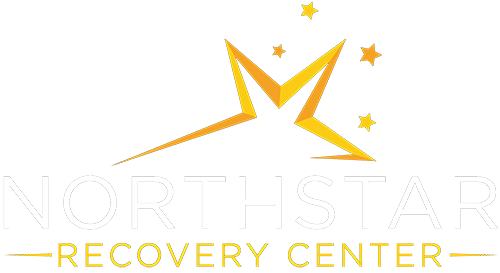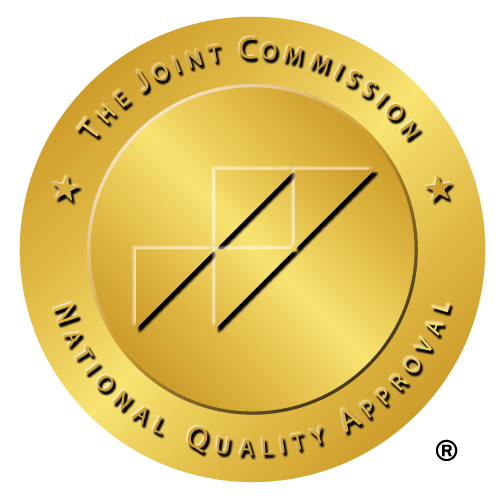Relapse is a common challenge faced by individuals on the path to recovery from substance abuse. Understanding the role of substance abuse triggers is crucial in preventing relapse and maintaining long-term sobriety. In this comprehensive guide, we delve into the nature of substance abuse triggers, their impact on relapse, and effective strategies for identifying and managing them.
What Are Substance Abuse Triggers?
Definition of Substance Abuse Triggers
Substance abuse triggers play a significant role in the development and maintenance of addictive behaviors. Understanding the definition and nature of substance abuse triggers is crucial in recognizing their influence and developing effective strategies to manage and overcome them.
External and Internal Stimuli
 Substance abuse triggers can be broadly categorized into two types: external and internal stimuli. External triggers are factors in the environment that elicit cravings or thoughts of substance use. They can include people, places, objects, or situations associated with past substance use experiences. For instance, walking by a bar where one used to drink heavily or being in the presence of friends who still engage in substance abuse can act as external triggers that evoke cravings.
Substance abuse triggers can be broadly categorized into two types: external and internal stimuli. External triggers are factors in the environment that elicit cravings or thoughts of substance use. They can include people, places, objects, or situations associated with past substance use experiences. For instance, walking by a bar where one used to drink heavily or being in the presence of friends who still engage in substance abuse can act as external triggers that evoke cravings.
On the other hand, internal triggers are internal states, emotions, or thoughts that lead to cravings or a desire to use substances. These internal stimuli can be intense emotions such as stress, anxiety, sadness, or loneliness. They can also include certain thought patterns or memories that are linked to substance use. Internal triggers can arise from the individual’s internal psychological and emotional landscape and are deeply intertwined with their unique experiences and vulnerabilities.
The uniqueness of Substance Abuse Triggers
Substance abuse triggers are highly individualized and vary from person to person. What may act as a trigger for one individual may not have the same effect on another. Triggers can be deeply personal and tied to specific experiences, memories, or associations with substance use. For example, a particular song that was frequently listened to while using substances for one person may not have the same triggering effect on someone else.
The uniqueness of substance abuse triggers highlights the importance of personalized treatment and tailored relapse prevention strategies. Each individual’s triggers must be identified and addressed in a way that acknowledges their individual experiences, vulnerabilities, and patterns of substance use.
Diverse Forms of Triggers
Substance abuse triggers can manifest in various forms. They can be external factors such as seeing drug paraphernalia, being in a certain social setting, or encountering specific people associated with substance use. Triggers can also arise from internal states, including intense emotions like anger, boredom, or excitement. Additionally, certain thoughts or cognitive patterns, such as romanticizing past substance use or engaging in negative self-talk, can act as triggers.
It’s important to note that triggers can also evolve over time. As individuals progress in their recovery journey, they may encounter new or different triggers that were not apparent earlier. Therefore, ongoing awareness and identification of triggers are crucial for sustained sobriety.
Association and Conditioning
Substance abuse triggers are often a result of associative learning and conditioning. The brain forms strong connections between substance use and the associated stimuli, creating a link that activates cravings or the desire to engage in addictive behaviors. These associations can be established through repeated exposure to specific people, places, or situations while under the influence of substances. Over time, the brain recognizes these triggers as cues for the expected reward of substance use, leading to the activation of the habit loop discussed earlier.
Understanding the association and conditioning process allows individuals in recovery to recognize the power that triggers hold and take proactive steps to break those associations. By disrupting the connection between triggers and substance use, individuals can weaken the cravings and reduce the likelihood of relapse.
Managing Substance Abuse Triggers
Recognizing substance abuse triggers is the first step toward effective management and relapse prevention. Through self-reflection, therapy, and support groups, individuals can gain insight into their personal triggers and develop strategies to cope with them. This may involve learning healthy coping mechanisms, developing alternative behaviors, and implementing stress management techniques.
Furthermore, addressing underlying factors such as unresolved trauma, co-occurring mental health conditions, or maladaptive coping mechanisms is crucial in managing triggers. Integrating evidence-based therapies like Cognitive-Behavioral Therapy (CBT), Dialectical Behavior Therapy (DBT), and mindfulness-based approaches can be particularly effective in helping individuals identify, understand, and manage substance abuse triggers.
In therapy, individuals can learn to reframe their thoughts and emotions, develop healthier coping strategies, and build resilience against triggers. Therapists can guide individuals in exploring the underlying causes of their substance use, addressing any unresolved issues, and developing personalized relapse prevention plans.
Building a strong support system is also vital in managing substance abuse triggers. Engaging with support groups, attending peer recovery meetings, and connecting with others who have experienced similar challenges can provide invaluable encouragement and understanding. Having individuals who can offer support, accountability, and guidance can make a significant difference in navigating triggers successfully.
Additionally, practicing self-care and adopting a healthy lifestyle can contribute to the overall management of triggers. Engaging in regular exercise, maintaining a balanced diet, getting sufficient sleep, and practicing stress-reduction techniques like meditation or mindfulness can help individuals maintain emotional well-being and resilience in the face of triggers.
It’s important to remember that managing substance abuse triggers is an ongoing process. Triggers may continue to arise throughout an individual’s recovery journey, but with time, practice, and the right tools, individuals can learn to recognize and effectively navigate them. Developing a strong foundation of self-awareness, coping skills, and a support network significantly increases the likelihood of successfully managing triggers and maintaining long-term sobriety.
By understanding the definition and nature of substance abuse triggers, individuals can take proactive steps to prevent relapse, create a healthier and more fulfilling life, and break free from the cycle of addiction. With a combination of self-reflection, professional support, and effective strategies, individuals can regain control over their lives, build resilience, and achieve lasting recovery.
Types of Substance Abuse Triggers
Substance abuse triggers can be categorized into several types, including environmental triggers, social triggers, and emotional triggers. Environmental triggers are related to physical surroundings, while social triggers involve interactions with others. Emotional triggers are connected to specific emotions or emotional states.
The Role of Triggers in Relapse
Understanding the Relapse Cycle
The Relapse Cycle: A Complex Process
Understanding the relapse cycle is crucial in preventing and managing relapse effectively. Relapse is not simply a single event but rather a process that involves various stages and factors. By recognizing the stages of the relapse cycle and the role triggers play within it, individuals can develop strategies to interrupt the cycle and maintain their recovery.
Stage 1: Emotional Triggers
The relapse cycle often begins with emotional triggers. Emotional triggers are intense emotions or emotional states that can evoke thoughts or memories associated with substance use. These triggers can include feelings of sadness, anger, anxiety, loneliness, or even positive emotions such as excitement or celebration. Emotional triggers can be powerful, as individuals may have used substances in the past to cope with or escape from these emotions.
During this stage, individuals may experience heightened vulnerability and a sense of emotional dysregulation. They may find it challenging to cope with the intensity of their emotions, leading to a desire to seek relief through substance use.
Stage 2: Cognitive Triggers
Following the emotional triggers, cognitive triggers come into play. Cognitive triggers involve the thoughts and mental processes that follow the activation of emotional triggers. These thoughts may involve fantasies about substance use, reminiscing about past positive experiences with substances, or rationalizing and justifying the use of substances as a means of coping with the emotional distress.
Cognitive triggers can be insidious, as they can create an internal dialogue that normalizes and romanticizes substance use. These thoughts can be influenced by distorted thinking patterns and beliefs associated with addiction, leading individuals to believe that using substances will alleviate their emotional discomfort.
Stage 3: Cravings
As cognitive triggers persist, cravings intensify. Cravings are intense desires or urges to engage in addictive behaviors or use substances. They can be both psychological and physiological in nature. Psychological cravings involve a strong desire to experience the pleasurable effects associated with substance use, while physiological cravings involve the body’s physiological response to the absence of the substance.
Cravings can be triggered by various factors, including environmental cues, social situations, and internal states. The combination of emotional triggers, cognitive triggers, and the resulting cravings can create a powerful pull toward substance use.
Stage 4: Substance Use
If the cycle remains uninterrupted, the final stage of the relapse cycle is substance use. At this stage, individuals may succumb to the cravings and engage in substance use, temporarily relieving the emotional distress and seeking the desired effects of the substances.
However, it’s important to note that substance use does not necessarily mean a complete return to addiction. It is possible for individuals to recognize the setback, regain control, and recommit to their recovery journey. Relapse can serve as a wake-up call, highlighting areas that need further attention and reinforcing the need for ongoing support and relapse prevention strategies.
The Role of Triggers in the Relapse Cycle
 Triggers play a significant role in initiating and perpetuating the relapse cycle. Emotional triggers, cognitive triggers, and cravings form a complex interplay that can lead individuals from emotional distress to substance use. Triggers act as catalysts, reigniting the desire for substances and reinforcing the associations between substances and emotional relief.
Triggers play a significant role in initiating and perpetuating the relapse cycle. Emotional triggers, cognitive triggers, and cravings form a complex interplay that can lead individuals from emotional distress to substance use. Triggers act as catalysts, reigniting the desire for substances and reinforcing the associations between substances and emotional relief.
By understanding the pivotal role of triggers, individuals can gain awareness of the relapse cycle and develop strategies to intervene at various stages. Identifying personal triggers, cultivating healthy coping mechanisms, and building a strong support network are essential steps in interrupting the cycle and preventing relapse.
Recognizing emotional triggers and implementing strategies to manage and regulate emotions effectively is crucial in breaking the initial stage of the cycle. Developing cognitive-behavioral techniques to challenge and reframe distorted thoughts can help individuals counter cognitive triggers. By practicing mindfulness and engaging in healthy coping mechanisms, individuals can reduce the intensity of cravings
The Influence of Triggers in Relapse
Triggers can have a powerful influence on individuals in recovery. They can evoke memories associated with substance use, intensify cravings, and challenge one’s commitment to sobriety. Understanding the impact of triggers is essential in developing effective relapse prevention strategies.
Identifying Personal Triggers
Self-Reflection and Awareness
The first step in managing substance abuse triggers is self-reflection and developing self-awareness. Taking the time to reflect on past experiences, identify patterns, and understand personal vulnerabilities can provide valuable insights into individual triggers.
Common Personal Triggers: Understanding Vulnerabilities
In addiction recovery, identifying personal triggers is a critical step in maintaining sobriety and preventing relapse. Triggers can be deeply individualized, reflecting unique experiences and vulnerabilities. However, certain triggers are commonly shared among individuals in recovery. By recognizing these common personal triggers, individuals can develop strategies to effectively manage and navigate them.
Stress: A Ubiquitous Trigger
Stress is a prevalent trigger for many individuals struggling with addiction. Life stressors such as work pressures, relationship conflicts, financial difficulties, or even daily hassles can evoke feelings of overwhelm and create a strong desire to seek relief through substance use. Stress can disrupt emotional balance and increase the vulnerability to relapse.
Developing healthy stress management techniques is crucial in reducing the impact of stress as a trigger. This may involve engaging in relaxation exercises, practicing mindfulness, participating in physical activities, or seeking support from therapists or support groups. By learning to manage stress in healthier ways, individuals can mitigate the risk of relapse.
Loneliness and Isolation: Craving Connection
Feelings of loneliness and isolation can be powerful triggers for individudals in recovery. Substance use may have provided a temporary escape from these emotions in the past. However, during the recovery journey, it’s essential to develop healthier connections and support systems.
Building a strong support network is paramount in combating loneliness and reducing the risk of relapse. This can involve participating in support groups, attending recovery meetings, seeking guidance from sponsors or mentors, or reconnecting with loved ones who support sobriety. Engaging in social activities that promote connection and foster meaningful relationships can help alleviate feelings of loneliness.
Boredom: Filling the Void
Boredom can be a significant trigger for individuals in recovery, particularly during idle or unstructured periods. In the past, substance use may have been a way to alleviate boredom or fill the void. However, finding healthy and engaging activities is essential in overcoming this trigger.
Exploring new hobbies, pursuing interests, or engaging in creative outlets can help fill the void left by substance use and provide a sense of fulfillment. Developing a schedule that incorporates meaningful activities and setting goals can combat boredom and reduce the susceptibility to relapse.
Negative Emotions: The Challenge of Emotional Turmoil
Negative emotions, such as sadness, anger, frustration, or anxiety, can act as potent triggers for relapse. These emotions can be overwhelming, and individuals may be tempted to turn to substances as a means of escape or emotional numbing.
Developing healthy emotional regulation strategies is crucial in managing negative emotions as triggers. This may involve therapy, where individuals learn to identify and process emotions effectively, or practicing techniques like deep breathing exercises, journaling, or meditation. Engaging in self-care activities and seeking support from therapists or support groups can provide guidance and validation during times of emotional turmoil.
Specific Places or Social Gatherings: Contextual Triggers
Certain places or social gatherings that were previously associated with substance use can act as triggers for individuals in recovery. These environments can evoke memories and associations that reignite cravings or temptations to use substances.
Avoiding or modifying these triggering environments is important in relapse prevention. If attending specific events or gatherings is necessary, developing an exit plan or bringing a supportive companion can provide a safety net. Creating new, substance-free associations with familiar places or finding alternative social activities can help break the link between these triggers and substance use.
Proactive Preparation: Responding Differently to Triggers
Recognizing common personal triggers is just the first step. To effectively manage triggers, individuals must develop proactive strategies to respond differently when faced with triggering situations. This may involve:
- Developing a relapse prevention plan: Creating a personalized plan that outlines specific strategies and coping mechanisms to employ when triggers arise.
- Utilizing coping skills: Learning and practicing healthy coping skills that can be applied in the face of triggers. This may include deep breathing exercises, mindfulness techniques, engaging in physical activity, or seeking support from a therapist or support group.
- Seeking support: Building a strong support network of individuals who understand the challenges of recovery and can offer guidance and encouragement during triggering moments. This can involve attending support group meetings, reaching out to a sponsor or mentor, or seeking therapy sessions.
- Engaging in alternative activities: Identifying and engaging in alternative activities that provide enjoyment and fulfillment without the use of substances. This can include pursuing hobbies, participating in recreational activities, or exploring creative outlets.
- Developing healthy routines: Establishing structured daily routines that promote overall well-being and reduce vulnerability to triggers. This can involve incorporating regular exercise, proper nutrition, adequate sleep, and self-care practices into one’s daily life.
- Practicing self-awareness: Cultivating self-awareness to recognize the onset of triggering thoughts, emotions, or situations. By being mindful of internal and external cues, individuals can intervene early and implement their coping strategies before cravings escalate.
- Seeking professional help: Recognizing the value of professional guidance and support in managing triggers. Therapists, counselors, and addiction specialists can provide personalized strategies, address underlying issues, and offer invaluable insights and tools for relapse prevention.
It’s important to remember that managing personal triggers is an ongoing process. As individuals progress in their recovery journey, new triggers may emerge, and existing triggers may evolve. Regular self-reflection, adaptation of strategies, and continued support are crucial in maintaining long-term sobriety.
By identifying common personal triggers and developing proactive strategies to respond differently, individuals can empower themselves to navigate triggering situations successfully. Over time, the management of triggers becomes more natural and integrated into one’s recovery lifestyle, supporting sustained sobriety and fulfilling life free from substance abuse.
External Triggers: Environmental and Social Factors
Environmental Triggers
Environmental triggers refer to physical surroundings that can stimulate cravings or thoughts of substance use. Examples may include passing by a former favorite bar, visiting places where substances were commonly used, or encountering drug paraphernalia. Recognizing and avoiding these environments or finding ways to modify them can help reduce the influence of environmental triggers.
Social Triggers
Social triggers involve interactions with individuals or social situations that can increase the temptation to use substances. These triggers can be challenging to manage, especially when friends or acquaintances still engage in substance use. Building a strong support network and cultivating new relationships with individuals who support sobriety are essential in navigating social triggers effectively.
Emotional Triggers: Dealing with Negative Emotions
The Connection Between Emotions and Substance Abuse
Emotional triggers are closely tied to substance abuse. Negative emotions such as sadness, anger, anxiety, or even positive emotions like excitement or celebration can trigger cravings or a desire to use substances. Many individuals turn to substances as a way to cope with or escape from these intense emotions.
Coping Strategies for Emotional Triggers
Developing healthy coping strategies for emotional triggers is crucial in relapse prevention. Engaging in activities that promote relaxation and stress reduction, such as deep breathing exercises, mindfulness, yoga, or engaging in creative outlets, can help manage negative emotions. Seeking support from therapists, counselors, or support groups can provide additional guidance and assistance in developing effective coping mechanisms.
Overcoming Triggers: Strategies for Relapse Prevention
Developing a Relapse Prevention Plan
Creating a relapse prevention plan is an essential part of managing triggers and maintaining sobriety. This plan involves identifying specific triggers, developing strategies to avoid or cope with them, and outlining steps to take in case of an actual or potential relapse. Having a well-thought-out plan in place provides a roadmap for managing triggers effectively.
Building a Support Network
Building a strong support network is crucial for relapse prevention. Surrounding oneself with individuals who understand the challenges of recovery and provide encouragement and accountability can significantly increase the chances of success. Support can come from therapists, support groups, sponsors, mentors, or trusted friends and family members who are committed to your well-being.
Lifestyle Changes: Creating a Healthy Environment
Establishing Healthy Routines
Creating healthy routines and habits plays a significant role in managing triggers and preventing relapse. Establishing a structured daily routine can provide stability and reduce the likelihood of succumbing to triggers. Incorporating activities such as exercise, healthy eating, hobbies, and self-care into daily life promotes overall well-being and reduces vulnerability to substance abuse triggers.
Addressing Unhealthy Relationships
Unhealthy relationships can be significant triggers for substance abuse. Identifying and addressing toxic or enabling relationships is crucial in maintaining sobriety and preventing relapse. This may involve setting boundaries, seeking couples or family therapy, or, in some cases, distancing oneself from individuals who pose a threat to recovery. Creating a supportive network of individuals who prioritize sobriety and offer positive reinforcement is essential for long-term success.
Seeking Professional Help: Therapy and Treatment
Cognitive-Behavioral Therapy (CBT)
Cognitive-Behavioral Therapy (CBT) is a widely used therapeutic approach that helps individuals identify and modify thought patterns and behaviors that contribute to substance abuse. CBT equips individuals with practical skills and strategies to recognize and cope with triggers, manage cravings, and develop healthier coping mechanisms.
Dialectical Behavior Therapy (DBT)
Dialectical Behavior Therapy (DBT) combines elements of CBT with mindfulness practices to help individuals regulate emotions, manage stress, and improve interpersonal relationships. DBT provides valuable tools for recognizing triggers, coping with intense emotions, and preventing relapse.
Relapse as a Learning Opportunity
Changing Perspectives on Relapse
Relapse should not be viewed as a sign of failure but rather as an opportunity for growth and learning. It is essential to shift the perspective on relapse and see it as a temporary setback rather than a complete derailment of progress. Understanding the factors that contributed to the relapse and using those insights to refine relapse prevention strategies is key to long-term recovery.
Utilizing Relapse as a Catalyst for Growth
Relapse can serve as a catalyst for personal growth and strengthening one’s commitment to sobriety. It offers an opportunity to reevaluate triggers, refine coping mechanisms, and seek additional support. Through introspection, individuals can identify areas of vulnerability and work towards developing a more resilient recovery plan.
So How to Take All Of This In
Understanding substance abuse triggers is vital in preventing relapse and maintaining long-term sobriety. By recognizing personal triggers, whether they are environmental, social, or emotional, individuals in recovery can develop effective strategies to manage and overcome them. Building a strong support network, seeking professional help, and making positive lifestyle changes contribute to relapse prevention. Remember, relapse is not a failure but an opportunity to learn and grow. With the right tools, support, and determination, individuals can navigate triggers successfully and continue on the path to a healthier, substance-free life.
Contact Northstar Recovery Center if You or a Loved One Has Relapsed. We Can Help.
If you find yourself or a cherished individual in your life grappling with the difficult circumstances of a relapse, we cordially invite you to reach out to us at Northstar Recovery Center. We extend our heartfelt understanding and assure you that there is no need for despair or feelings of isolation. Indeed, our primary mission is to be a beacon of hope and support in such challenging times. We are equipped with extensive resources, skilled professionals, and a steadfast commitment to assist those wrestling with these complex struggles. Our unwavering promise is that we can provide substantial help and guidance during this critical juncture in your life or the life of your loved one. So, do not hesitate. We are here to help.
Frequently Asked Questions
1. Can substance abuse triggers be completely eliminated?
While it may not be possible to completely eliminate all substance abuse triggers, individuals in recovery can learn to manage and reduce their impact. By developing awareness, implementing coping strategies, and making lifestyle changes, individuals can effectively navigate triggers and prevent relapse.
2. Is relapse a sign of failure in recovery?
No, relapse is not a sign of failure. Recovery is a journey, and setbacks can occur. It is important to view relapse as an opportunity for growth and learning, and to use it as motivation to refine relapse prevention strategies and seek additional support.
3. Can relapse be prevented entirely?
While relapse prevention strategies are effective, it is impossible to guarantee that relapse will never occur. However, by understanding triggers, building a strong support network, and implementing healthy coping mechanisms, individuals can significantly reduce the likelihood of relapse and maintain long-term sobriety.
4. How long does it take to develop effective relapse prevention strategies?
Developing effective relapse prevention strategies is an ongoing process that varies for each individual. It takes time, self-reflection, and trial and error to identify what works best. With persistence, dedication, and professional guidance, individuals can refine their strategies and enhance their relapse prevention skills over time.

